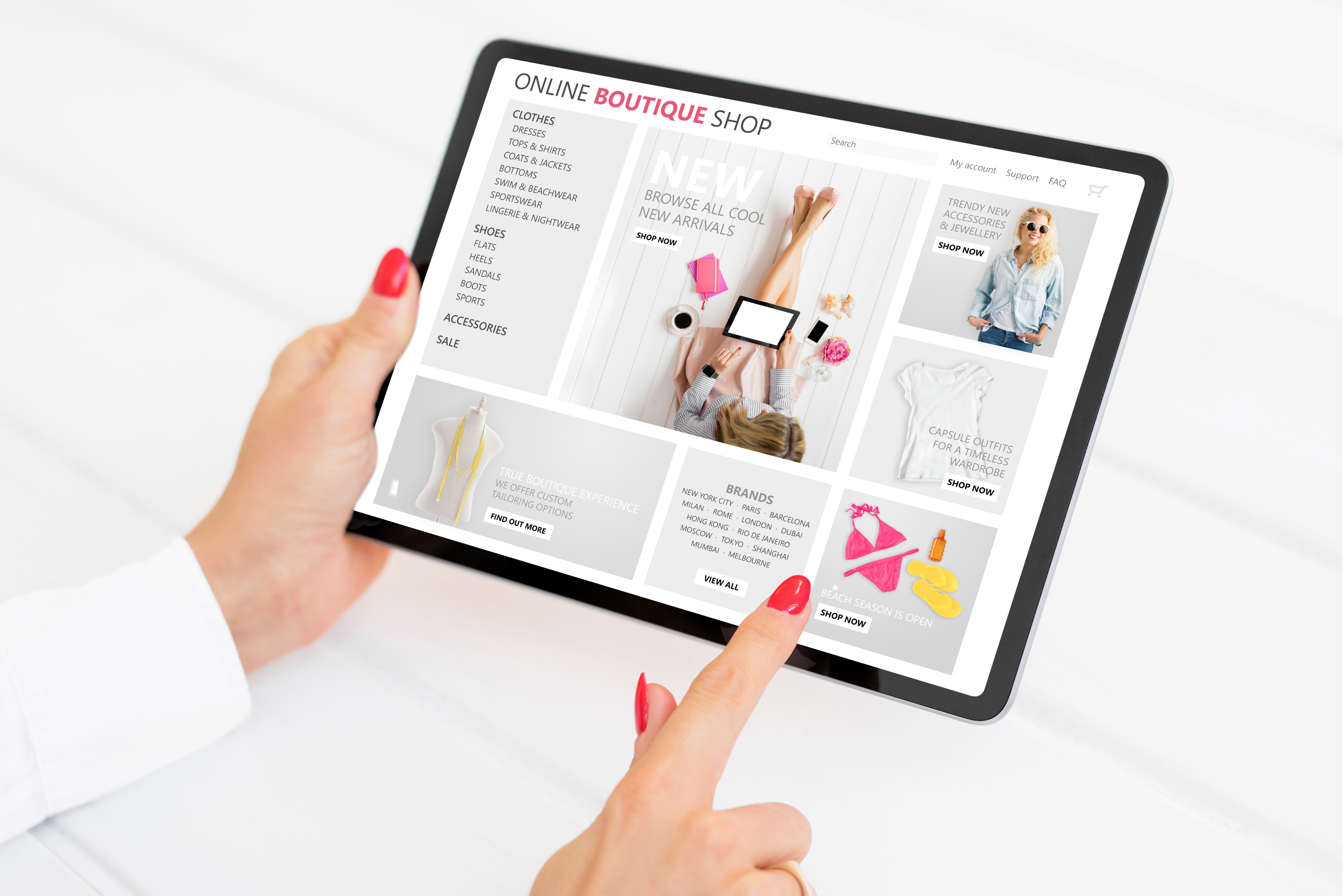5 engaging content formats your customers want
09/08/2024
People are no longer satisfied with the standard content formats they’ve been served up for decades.
They want more entertaining, engaging content.
Content that adds value to their lives.
Content that isn’t trying to sell them something directly.
And content that answers their questions and tackles their pain points.
The modern consumer is looking for content that ticks all the right boxes. It needs to be valuable, resonating, solution-oriented, and unforcefully convincing. And it needs to be in a format that appeals to their consumption habits.
The truth is that the bar of expectation has been significantly raised. So, brands today need to create innovative and dynamic content formats to stay relevant.
Read on to discover five types of content your customers are likely expecting from you today.
Brands need to step beyond the norm and create content in formats that appeal to their audience’s consumption habits.
A new chapter in customer-brand interaction
Content was once only used to inform customers about a brand’s products and services. But now, it presents a game-changing opportunity for brands to engage with their audiences.
Content is an indispensable asset. And it can be very useful throughout a customer’s journey. It helps you gather vital data about your customers’ needs and expectations in the early stages. And it helps you address their specific pain points and queries and communicate your solution, easing their journey through the sales funnel.
It doesn’t stop there. Content can also build customer loyalty and drive brand growth by creating engaging, memorable experiences.
This is especially true for Millennials (also referred to as Gen Y). This digitally-native, tech-savvy audience craves innovation, engaging content, and out-of-the-box experiences.
By using high-quality content, your brand can satiate this thirst and secure the engagement and loyalty of this increasingly important customer segment.
Matching content formats to consumers’ changing preferences
Consumer behaviour and consumption habits are constantly changing. Content format preferences are also changing.
Understanding these changes is essential if you want to stay ahead of the curve and maintain audience engagement. Here’s why:
- Adapting to evolving preferences: As consumers’ content preferences shift, staying current helps you provide what your audience wants. Adapting to new formats ensures your content remains relevant and engaging.
- Increasing engagement rates: Matching your content formats with current trends can lead to higher engagement rates. That’s because formats that resonate with your audience will more likely drive more interaction, shares, and feedback.
- Staying competitive: Brands that don’t keep up with changing content formats risk falling behind competitors who are more in tune with audience preferences. And staying ahead ensures you maintain a competitive edge in your industry.
- Maximising content impact: Using preferred formats increases the likelihood that your content will be seen and valued by your audience. This maximises the impact of your messaging and drives better results.
- Enhancing user experiences: Aligning content formats with content consumption habits improves the overall user experience. When content is delivered in a preferred format, it’s more likely to be consumed, appreciated, and acted upon.
5 engaging content formats to start using today
Traditional content formats are taking a backseat. When asked about their preferred way to learn about a new product, 68% said they prefer video, 15% stated blogs or articles (15%), and 4% stated infographics.
Including those three, let’s explore the top five types of content formats your customers are expecting from you today:
1. Videos
There’s something captivating about moving imagery coupled with sound—it grabs attention, narrates a story, and creates an authentic connection with people.
Compared to plain text, videos are 50 times more likely to drive organic search traffic. Not only that, but 43% of consumers are now expecting marketers to produce video content.
Once only limited to advertisements, videos have transformed into other engaging formats that cater to diverse customer needs and consumption behaviours.
How-to guides, product showcases, customer testimonials, and behind-the-scenes clips are just a few types of videos that resonate with people today. Mainly because they offer a visual breakdown of products or services in a way that’s easy to digest and share.
2. Blogs
70% of consumers prefer to get company information or learn something from an article or blog post rather than a traditional ad.
So, yes, blogs aren’t going anywhere.
Despite the rise in other content formats, blog posts still hold significant dominance in content consumption.
And rightly so, as they can be both informative and engaging, often supporting a brand’s expertise and showcasing its insightful perspectives.
Your readers no longer want content that sells them a product or service. They crave information, value, and solutions. So, what makes a blog article successful is its ability to address customers’ questions or pain points in a comprehensive way.
But only a handful of brands have mastered the art of blogging, which requires a clever mix of storytelling, data, and graphics to make complex topics digestible and interesting. You want to be one of them.
3. Podcasts
Today, people crave genuine stories and sincere conversations. 64% of B2B marketers believe podcasts are a valuable content format in the early stages of the buying journey.
In the US alone, podcast listeners are forecasted to spend an average of 54 minutes per day in 2024. They listen during their morning commute. During their workouts. And while cooking dinner.
The thing is, no matter when or where they’re listened to, podcasts give your audience the freedom to consume your content without demanding their undivided attention.
Podcasts also help create a human connection that traditional content rarely provides. Instead of the cold, clinical tone that traditional marketing may sound like, podcasts are more likely to engage your audience.
You can use podcasts to share background stories about your company, interviews with industry experts, customer testimonials, or detailed discussions about your products or services.
Moreover, you can use snippets and transcriptions of your podcast to repurpose and create other content formats. Think videos, blog posts, and social media updates.
4. Infographics
Today, brevity is increasingly appreciated. And infographics offer the perfect blend of visual appeal and brief information. That’s why they’ve been mainstays in the content marketing arena for years.
76% of B2B marketers believe infographics are a valuable content format in the early stages of the buying journey. Moreover, 32% say visual images are the most important form of content for their businesses.
Brands that share infographics experience 12% more growth in traffic than brands that don’t. That’s because infographics can break down complex ideas into simple, easy-to-digest bits of information.
Want to take it up a notch? Consider interactive infographics, which give your clients the control to engage with the content at their own pace.
Interactive infographics aren’t that complicated to produce. There are many data visualisation tools that can help you create interactive timelines. Or heat maps that can be adjusted to show specific periods or locations. Or even map overlays that model real-life situations or geographies.
5. User-generated content (UGC)
If you’ve ever appreciated and benefitted from a customer review, you’ve already experienced the impact of user-generated content (UGC).
UGC comprises everything from social media posts, blog comments, and forum discussions to product reviews—and it’s a powerful way to leverage (and gain) your audience’s trust.
That’s because people tend to put increased trust in the opinions of their peers over well-crafted marketing messages. In fact, 79% of people say UGC highly impacts their purchasing decisions.
And when it comes to Millennials (who hold an increasing purchasing power today), they trust UGC 50% morethan the original content generated by brands.
Amplifying the voice of your audience, this type of content humanises your brand while acting as a persuasive form of social proof. It’s also more candid than professionally produced content. And it enhances your brand’s reliability and authenticity.
UGC also encourages audience participation and provides you with a wealth of authentic content that you can repurpose across your marketing channels.
How ONO Comms can help you create new content formats
At ONO Comms, we can help you create blog posts and video scripts that appeal to your customers and meet your business needs.
We’re a team of content strategists, writers, editors, and SEO professionals who work together to ensure that your content perfectly matches your business’s requirements and your audience’s needs.
To get started, contact us or schedule a free consultation with our founder.
Relevant stories
5 engaging content formats your customers want
- 09 August 2024
How to choose the perfect content agency for you
- 26 July 2024
Why you should start a business blog today
- 07 June 2024
How to create your first content strategy
- 24 May 2024
4 marketing strategies to differentiate your brand
- 26 April 2024
7 must-have sections for a perfect website structure
- 19 April 2024
Do you really need a business website?
- 05 April 2024
5 strategies to maintain website content after launch
- 29 March 2024
Ensure consistent quality content through outsourcing
- 22 March 2024
How to plan a website revamp without the hassle
- 15 March 2024
A B2B marketer’s guide to content creation
- 08 March 2024
Working with specialised content agencies
- 01 March 2024
















